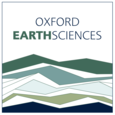News
Articles
New method provides the key to accessing proteins in ancient human remains
Professor David Pyle elected Fellow of the Royal Society
Scientists define the ingredients for finding natural clean hydrogen
Montserrat’s Premier Reuben Meade visits Oxford to deepen scientific collaboration on volcanic research
Oxford rises to second in world for Geology and Geophysics
Department of Earth Sciences welcomes new Schmidt AI in Science Fellow Dr Auggie Marignier
Eruption Loading: New Approaches to Earthquake Monitoring at Ontake Volcano, Japan
Anatomy of a “Zombie” Volcano: Investigating the Cause of Unrest Inside Uturuncu
Associate Professor Richard Palin Elected Chair of the Metamorphic Studies Group
Researchers uncover crucial evidence for the origin of water on Earth
University of Oxford establishes Oxford EARTH, a new programme for sustainable resource research
Department of Earth Sciences Magazine: Spring 2025 Issue
Studying the evolutionary history of large low velocity provinces in the deep mantle
Major changes to the Sahara Desert 8,000 years ago uncovered by Moroccan stalagmites
Professor Hugh Jenkyns awarded Geological Society Lyell Medal
Long-term ocean data challenge assumptions about regional differences in the ocean’s natural carbon sequestration potential
Claire Nichols recognised with MPLS Outstanding Research Supervision Award
Stopping magma in its tracks: how the Mull Dyke Swarm reached the North Sea
Discovery of Punk and Emo fossils challenges our understanding of ancient molluscs
Professor Ros Rickaby Recognised with OBE in 2025 New Year Honours
Ocean density identified as a key driver of carbon capture by marine plankton
Buried Alive: Carbon dioxide release from magma deep beneath ancient volcanoes was a hidden driver of Earth’s past climate
Golden bugs: Spectacular new fossil arthropods preserved in fool’s gold
Recent Publications
Implications of a highly convective lunar magma ocean: Insights from phase equilibria modeling
Implications of a highly convective lunar magma ocean: Insights from phase equilibria modeling
5109 Space Sciences
,5101 Astronomical Sciences
,51 Physical Sciences
Seismic stratigraphic framework, dispersal of depocenters, and helium reservoirs in the Rukwa Rift Basin, Tanzania
Seismic stratigraphic framework, dispersal of depocenters, and helium reservoirs in the Rukwa Rift Basin, Tanzania
The Rukwa Rift Basin (RRB) in the southwestern Tanzania presents favourable geological conditions for the occurrence and accumulation of helium gas. However, the evolution and dynamics of these favourable conditions in relation to helium remain complex. In this study, laboratory- cored samples, 2D seismic reflection data, Digital Elevation Model (DEM) and well data are integrated to map the distribution of sediment accumulation and potential helium reservoirs. The isochron and time-thickness maps unveil that the RRB experienced a shift in depocenter location and progressive strata dispersal in space and time during each of the rifting phases from the late Paleozoic to the late Cenozoic. The results reveal a change in morphology while distribution of depocenters is defined by topographic highs related to footwall uplift during a multiphase rifting history that modulated the deposition, differential erosional patterns, drainage system and sediment routing in the RRB. The depocenters to the south of the Saza shear zone might have been isolated initially during Karoo rifting, contiguous during Cretaceous and linked into a single main depocenter during the latter stages of rifting between late Miocene and Pleistocene. Petrophysical analysis reveal high porosity and permeability ranges, that is ∼26–30 % and ∼ 272.7–660.6 mD respectively. These petrophysical parameters are high enough for potential helium reservoirs comprising sandstone sequences mainly in the Karoo and Red Sandstone formations.
Interactions of CO2 with sedimentary blue carbon: the fate of leaked CO2 from a geological storage site
Interactions of CO2 with sedimentary blue carbon: the fate of leaked CO2 from a geological storage site
The global imprint of shale weathering on molybdenum isotope ratios in river waters
The global imprint of shale weathering on molybdenum isotope ratios in river waters
14 Life Below Water
,37 Earth Sciences
,3705 Geology
,3703 Geochemistry
Sustained shift in the morphology of organic-walled microfossils over the Ediacaran-Cambrian transition
Sustained shift in the morphology of organic-walled microfossils over the Ediacaran-Cambrian transition
Geochemistry and mineralogy of Neoproterozoic strata in northeastern Svalbard: re-evaluating the prevalence of basalt weathering during the early Neoproterozoic
Geochemistry and mineralogy of Neoproterozoic strata in northeastern Svalbard: re-evaluating the prevalence of basalt weathering during the early Neoproterozoic
Detecting shallow subsurface anomalies with airborne and spaceborne remote sensing: A review
Detecting shallow subsurface anomalies with airborne and spaceborne remote sensing: A review
Inefficient Melt Transport Across a Weakened Lithosphere Led to Anomalous Rift Architecture in the Turkana Depression
Inefficient Melt Transport Across a Weakened Lithosphere Led to Anomalous Rift Architecture in the Turkana Depression
3703 Geochemistry
,3706 Geophysics
,37 Earth Sciences
,3705 Geology
Old carbon routed from land to the atmosphere by global river systems.
Old carbon routed from land to the atmosphere by global river systems.
Rivers and streams are an important pathway in the global carbon cycle, releasing carbon dioxide (CO2) and methane (CH4) from their water surfaces to the atmosphere1,2. Until now, CO2 and CH4 emitted from rivers were thought to be predominantly derived from recent (sub-decadal) biomass production and, thus, part of ecosystem respiration3-6. Here we combine new and published measurements to create a global database of the radiocarbon content of river dissolved inorganic carbon (DIC), CO2 and CH4. Isotopic mass balance of our database suggests that 59 ± 17% of global river CO2 emissions are derived from old carbon (millennial or older), the release of which is linked to river catchment lithology and biome. This previously unrecognized release of old, pre-industrial-aged carbon to the atmosphere from long-term soil, sediment and geologic carbon stores through lateral hydrological routing equates to 1.2 ± 0.3 Pg C year-1, similar in magnitude to terrestrial net ecosystem exchange. A consequence of this flux is a greater than expected net loss of carbon from aged organic matter stores on land. This requires a reassessment of the fate of anthropogenic carbon in terrestrial systems and in global carbon cycle budgets and models.
Atmosphere
,Geologic Sediments
,Soil
,Rivers
,Carbon Dioxide
,Ecosystem
,Carbon Cycle
,Methane
,Carbon




























